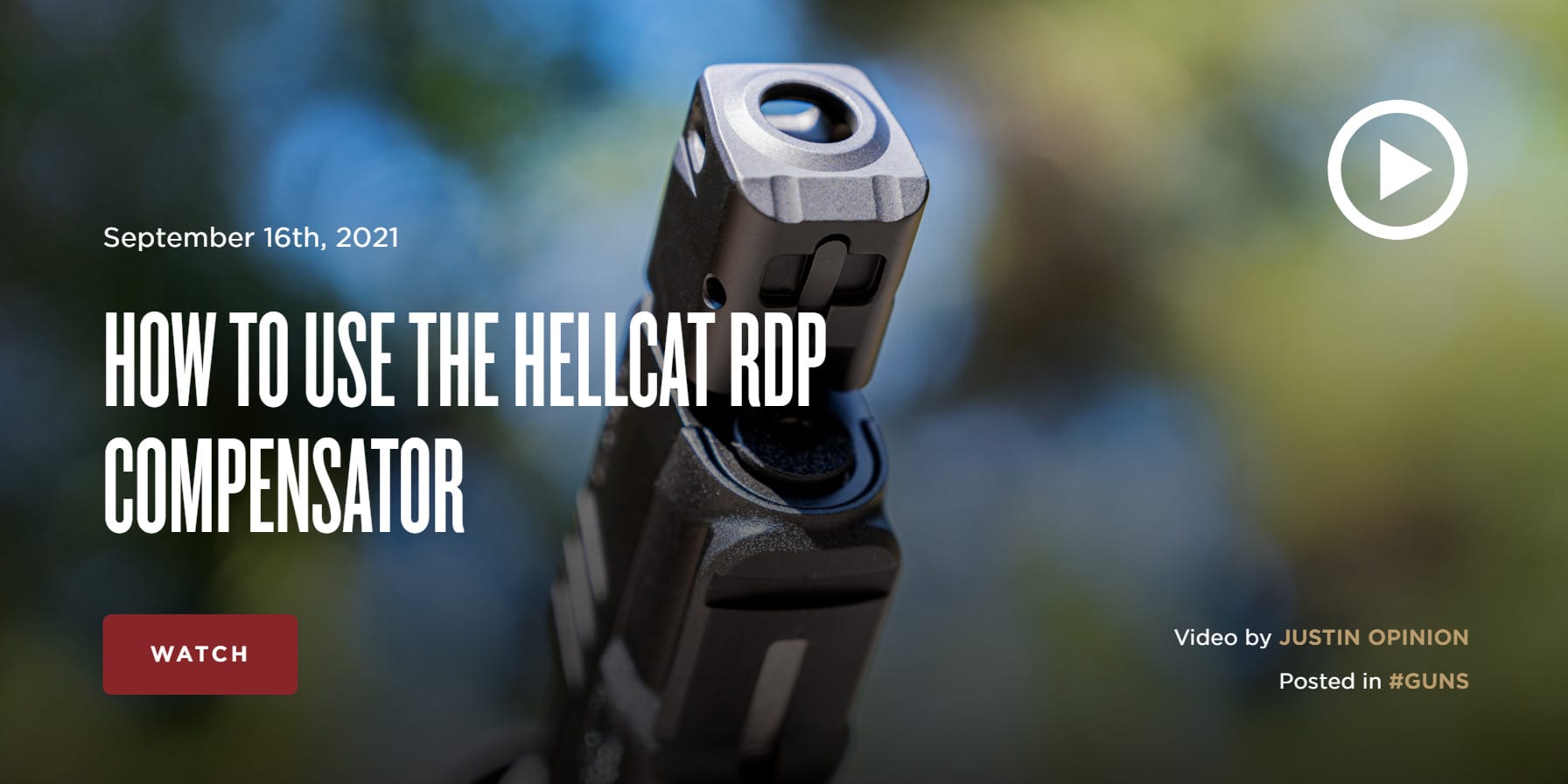Hello all, here is today's article posted on TheArmoryLife.com. It is titled "How To Use the Hellcat RDP Compensator" and can be found at https://www.thearmorylife.com/how-to-use-the-hellcat-rdp-compensator/.



Check out Mag-Na-Port bro. I used to CCW a Glock 26. That'd be great for it.I was considering getting one of these or some other lightweight concealed carry because for now I've got a glock 26 that feels more like a brick than a concealed carry handgun. But after seeing the negligible difference in that crazy recoil I've decided against it. It would have made sense if the thing had stayed almost level but it's kicking back just as far as the uncompensated hellcat.
That seems like a light spring for .450 SMC.My load for social carry is Double Taps .450 SMC 230 gr. w/an 18.5 recoil spring. Porting tames it very well. Regular ball for the range is a breeze.
I don't know how that could've happened Dag but I have never had any problems with anything like that. I shoot in daylight and low light w/o problems. Of course muzzle flare in night scenarios is always a a factor at any any rate.I would not have a carry gun with a compensator or porting. I will never forget being on a night fire qualification course and one of the agents present had his newly magna ported .357 revolver. Well the first rounds of the course were fired from retention. He did his speed rock and fired. His shooting glasses were blow off his face. The flash was quite bright and left a lasting impression for a few minutes. The flash directed out and up from the barrel was distinctly worse at night than that from an unported .357.
I have fired several ported and compensated guns over the years. None of them performed so well that I felt it was worth the negatives that go with them, so I've never owned one.
I think compensators or porting are fine for competition guns if you feel it gives you the edge you need.
Actually perfect spring per Springfield. Handles standard ball easy as well.That seems like a light spring for .450 SMC.
Good to know.Actually perfect spring per Springfield. Handles standard ball easy as well.
If you ever need to hold your firearm very close to the body to engage, you'll soon wish that flame was going 100% forward into the perp instead of your face, neck and arms.
I've never had a compensator on a handgun but both of the above, close quarters and night flash, seem to be real concerns or at the very least something to think about.I would not have a carry gun with a compensator or porting. I will never forget being on a night fire qualification course and one of the agents present had his newly magna ported .357 revolver. Well the first rounds of the course were fired from retention. He did his speed rock and fired. His shooting glasses were blow off his face. The flash was quite bright and left a lasting impression for a few minutes. The flash directed out and up from the barrel was distinctly worse at night than that from an unported .357.
I have fired several ported and compensated guns over the years. None of them performed so well that I felt it was worth the negatives that go with them, so I've never owned one.
I think compensators or porting are fine for competition guns if you feel it gives you the edge you need.
An important aspect of that comparison video would be the need to use ammunition that's really going to take advantadge of a compensator. Specifically +P as was used in the originally posted video.I've never had a compensator on a handgun but both of the above, close quarters and night flash, seem to be real concerns or at the very least something to think about.
Maybe "Justin Opinion" can do a night video showing the differences in the night flash with and without the compensator. He likes to compare things.
Well it might not be a Hellcat RDP but I just burned up my range bag with my SA AR-10 muzzle brake, ugh!An important aspect of that comparison video would be the need to use ammunition that's really going to take advantadge of a compensator. Specifically +P as was used in the originally posted video.
Also have some fabric immediately to the side of the pistol, just as it would be in a speed rock situation.
The additional weight with the 3.8" threaded barrel vs the 3" standard barrel and the compensator attached is only 1.4 oz according to the specs. I would have to guess it the compensator.Interesting Video.
The main question for me is: is the lower recoil due to the function of the compensator or to the additional weight at the muzzle?
Maybe. But here you can see that almost all of the gases exit at the front and are not directed upward to compensate for the recoil.The additional weight with the 3.8" threaded barrel vs the 3" standard barrel and the compensator attached is only 1.4 oz according to the specs. I would have to guess it the compensator.
